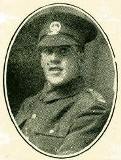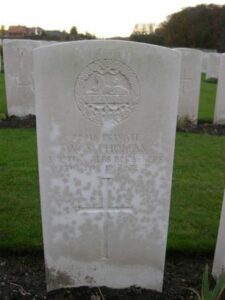Cefneithin is a small village situated on the Gwendraeth Fawr, the centre of the famous Welsh Outside Half Factory, and lies just off the A48 road, seven miles north west of Ammanford and nine miles north of Llanelli. The men of the village who fell during the Great War are commemorated on a war memorial which is located inside Tabernacl Chapel at Cefneithin.
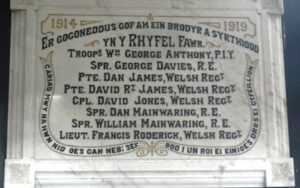
World War One, 1914-1918
William George Anthony, Private, 4376, Pembroke Yeomanry. William was the son of John and Mary Anthony, of Penpont, Llanarthney. He enlisted at Carmarthen on 17 October 1914 into the Pembroke Yeomanry. William served in Egypt with the 1/1st Battalion, Pembroke Yeomanry from 4 March 1916 until being evacuated sick on 5 September 1916. He was hospitalised in Britain after returning home, and was found to be suffering from tuberculosis brought on by his service in Egypt. He was subsequently discharged from the army as medically unfit, and went to live with his parents, who had moved to Brynceitho, Cefneithin. He died on 4 November 1918 aged 24. William’s case was put forward to the CWGC on 8 May 2013 as a result of my work, and he was accepted for commemoration on 11 November 2014. He will be commemorated in the United Kingdom Book of Remembrance until his grave can be found.
George Davies, Sapper, 448501, Royal Engineers. George was the son of Thomas and Ann Davies, of Carreglas, Cross Hands. He had married just before the war, and resided with his wife at Glynllwchwr Road, Pontardulais. George enlisted in Ammanford into the Welsh Field Company, Royal Engineers, but instead of moving to the Mediterranean with the unit, was posted to France on 23 October 1915, joining the 90th Field Company, Royal Engineers, which was attached to the 9th Scottish Division. George served with the division for most of the war, but was wounded sometime in July 1918, and was taken to the Military Hospital near St. Omer, where he succumbed to his wounds on 1 August 1918, aged 21. He was buried in Longuenesse (St. Omer) Souvenir Cemetery, France.
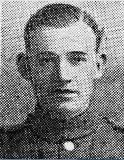
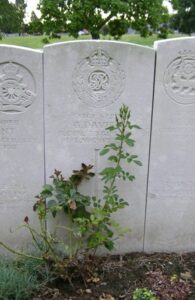
David Robert James, Private, 1490, Welsh Regiment. David was the son of Rachel James, of Plas-Bach, Cefneithin. He enlisted in Llanelli prior to the war, joining the 2nd Battalion, Welsh Regiment. At the outbreak of war the battalion moved to France attached to 3 Brigade, 1st Division. The Division fought a desperate rearguard action down towards the Marne, where William Fuller of the 2nd Welsh won his VC. During September 1915, the Division held the line in Northern France, where they took part in the Battle of Loos, which was launched on 25 September 1915. On the second day of the battle, 26 October 1915, the 1st Division took part in a second assault, tasked with the German line at Hulloch. David was killed in action at some time during the heavy fighting which occurred during the day. His body was lost on the battlefield, and so he is remembered on the Loos Memorial, France.
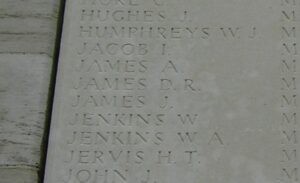
Dan Mainwaring, Sapper, 48405, Royal Engineers. Dan was the son of Daniel and Hannah Mainwaring, of Glangwili Villa, Cross Hands. He enlisted in Tumble along with his twin brother William, joining the Royal Engineers, with consecutive service numbers. Both brothers landed in France on 16 July 1915, with the 93rd Field Company, Royal Engineers, which was attached to the 17th Northern Division. The Division were fighting around Ypres during December 1915, when Dan was badly wounded. He was to die of his wounds on 16 December 1915, aged 26, and was laid to rest at Bedford House Cemetery, Belgium.
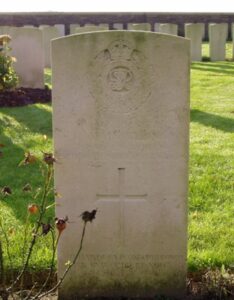
William Mainwaring, Sapper, 48406, Royal Engineers. William the son of Daniel and Hannah Mainwaring, of Glangwili Villa, Cross Hands. He enlisted in Tumble along with his twin Dan, into the Royal Engineers, with consecutive service numbers. Both brothers landed in France on 16 July 1915, with the 93rd Field Company, Royal Engineers, which was attached to the 17th Northern Division. Sometime after Dan’s death, William moved to the 237th Field Company, Royal Engineers, which formed part of the 40th (Bantam) Division. The Bantam Division was made of primarily of men who were originally too short to serve in the British Army, but after heavy losses in 1914/15, the minimum height limit was dropped. On 17 July 1918, the Division was holding the line near Ypres when William was mortally wounded. He was taken to the Military Hospital at Ljissenthoek, but died that day, aged 28. He lies in the massive Ljissenthoek Military Cemetery, Belgium.
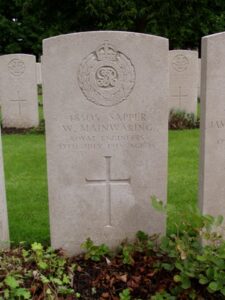
Francis Roderick B.A, Lieutenant, Welsh Regiment. Francis was the son of David and Elizabeth Roderick, of Cwmcerig Fach, Cefneithin. He was educated at Aberystwyth University before enlisting into the 16th Battalion, Royal Welsh Fusiliers at the outbreak of war. On 9 January 1915 Francis was commissioned into the 14th Battalion, Welsh Regiment, which was at Rhyl. In December 1915 the battalion moved to France, attached to 114 Brigade, 38th Welsh Division. Francis survived the Battalions massacre on the Somme, where the entire Welsh Division suffered terrible casualties at Mametz Wood, and moved with his battalion to Ypres. After almost twelve months holding the Boesinghe sector, on 31 July 1917 the 38th Division began its famous attack on Pilckem Ridge. Francis was mortally wounded during the assault, and died that same day, aged 22. He is buried in Bard Cottage Cemetery, Belgium. He seemed to have had a premonition of his death, as he had written his last letter home to his parents on 22 July, telling them not to mourn his loss.

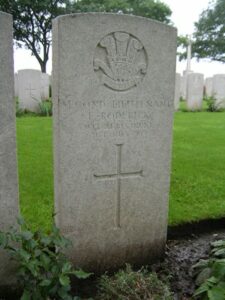
William Owen Thomas, Private, 29616, South Wales Borderers. William was born around 1892, in Blaenporth, Cardiganshire, the son of David and Hettey Thomas. He married Elizabeth, of Furze Hill, Cefneithin at some time around the start of the war. William enlisted at Brecon into the South Wales Borderers. He was posted to the 5th Battalion, South Wales Borderers, which was attached to 58 Brigade, 19th (Western) Division. The Division fought at the Somme, suffering heavy casualties, and was moved to Ypres, where they took part in the Battle of Messines, which was the opening move of the Battle of Passchendaele. William was killed in action at ‘Whitesheets’ on 7 June 1917, aged 24, and was buried in Wytschaete Military Cemetery. William does not seem to be commemorated anywhere.
